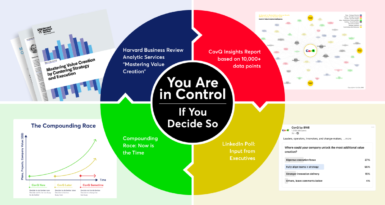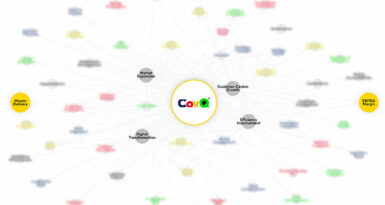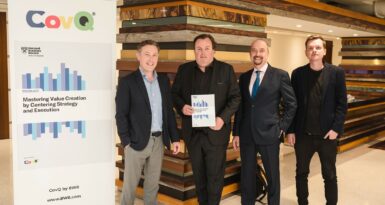
NPS has been the golden standard since its commencement almost 20 years ago where Fred Reichheld and Bain introduced it to assess consumers’ likelihood to recommend products. Several consulting companies have since brought NPS into the B2B vertical.
At Lift, we’ve been tracking NPS globally for the past six years on behalf of our clients, and based on data, we now know a better way to predict client churn and grow existing client relationships.
Here, my findings on why NPS doesn’t work when predicting client churn and growth in B2B (SPOILER ALERT…scroll to the end if you just want to understand the better era ahead):
1. NPS is A Narcissistic B2B Assessment
Have you recommended a service provider unprompted in the past 12 months? No, right. And why would you? There is no time for a narcissistic assessment in a world where it should be about the value a vendor creates for you. Companies that use NPS don’t understand that it shouldn’t be about them. What clients care about is whether you make a difference for their business and them individually. You probably know that, and that’s why you don’t make unprompted recommendations.
However, what you probably have done the past 12 months with your vendors is to assess whether they provide rock-solid capabilities, that the chemistry between you and them sparkles, and most importantly, that they are competitive vs. other vendors.
2. NPS Doesn’t Consider The Context
Recently I used a phenomenal law firm in New York. Phenomenal because their expertise is substantial on some of the expansion issues we experience as a growing SaaS company. They usually work with big corporates but recently shifting their focus towards SaaS scale-ups. They supported us at a very cost-efficient setup where they were extremely proactive (and still are) on our business. Would I recommend them? Hell no, I want to keep them for myself. 😊
Joke aside, I eventually did recommend them to a partner at a large consulting firm where they ended up having a completely different experience of this law firm, as their needs and expectations were not the same as ours. I made the recommendation, but it had minimal value for either party.
B2B relationships are complicated, context-based, and people dependent. And NPS doesn’t consider these highly essential elements for the B2B environment.
3. The simplicity of NPS is too simple
One question (or, more accurately, one answer) does not provide sufficient relevant insights to drive a client relationship forward, let alone your business. Real problems or opportunities don’t surface with NPS, and as such, there can be many hidden perceptions on the client side not discovered with NPS. When a “promoter” client churns unexpectedly, 85% of the time, it is directly related to not understanding the real issues in the relationship in time.
NPS provides outliers, but that intel is often not needed in B2B as you have account management that identifies that in time. The reality is that you don’t lose a client overnight, you lose them over time from the small issues that become too big to handle, and NPS doesn’t capture those developments while there’s still time to address them.
At best, NPS provides a direction like a compass. But today’s world is more dynamic, complex, and ambiguous than ever. Thus, it requires GPS-like insights at a granular level in real-time for companies rather than just a direction.
4. NPS is Only Intention-based
Research suggests that intention is not a reliable metric. Neither when planning (like budgets) or in understanding relationships. Because intentions often stay just that. I can back that up with my ex-wife as an example: She intended to stay in the relationship; however, she ended running away with her boss. To me, the reality was much harder to face than the intention. Ouch.
And the same goes for B2B relationships. When looking at the data behind, we know that NPS, on average, rate 22% higher by a decision-maker when assessing their vendor vs. other drivers of engagement. Why? Well, there are at least two factors for this: firstly, (the most significant reason and biggest surprise to many) is that the decision-makers are often evaluating their own choice of the vendor rather than the vendor itself. Giving a low recommendation to your own choice of vendor is highly unlikely, and as such, there is an inherent inflated rating of the score. Secondly, the NPS question is emotional. Emotional questions are often rated higher than rational questions, and they can be a false indicator of how healthy the relationship truly is.
At Lift, we’ve tracked NPS the past six years globally for several B2B companies and experience that their client churn has a disproportionally higher NPS than other drivers of engagement. NPS is like having a weak alarm system where the batteries are about to run out.
5. NPS Does Not Look at The Whole Client Relationship
NPS was designed for B2C verticals, so it did not make any sense to understand anything other than what your consumers think. However, for most B2B companies, client relationships live in developing the service’s work or delivery. The Service Profit Chain discussed the connectivity between these two forces from a theoretical perspective.
At Lift, we daily provide our clients insights about their client relationships by tracking both clients and teams servicing the client. In situations where the client is super engaged and the team servicing them is disengaged, this calls for an immediate alert to our client’s attention….because we know that if no actions are taken towards the team in this case, the client starts dropping in their engagement after an average of three months. This immediately puts an extra layer of risk into the client relationship.
Team engagement is THE number 1 early indicator warning of client development. But the exciting thing is that it works the other way too. If you have a disengaged client, you can infuse energy into the relationship by adding engaged team members from other accounts and raising client engagement over time. Having managed clients for years, you probably knew this, but NPS doesn’t.
6. The NPS Methodology is Broken
This is a big one. The methodology covers many aspects, and I could talk about this for hours (hit me up if you’re interested 😊). The biggest concern with the NPS methodology is that it lacks intelligence and is just a blunt instrument. Why? First, there is no semantic analysis of comments added to the ratings. Second, there is no consideration of score progression, which would provide a more accurate view of the account’s security. Third, whether actions were taken since the last go-around is not considered at all, but those actions can result in higher or lower ratings. Lastly, frequency isn’t considered either. It matters when a client last provided feedback.
7. NPS Only Show A Fraction of The Client Picture
Although this part is also part of the methodology, I had to carve this out as a separate point as I cannot state how much this is the main reason that too much unnecessary revenue churn is happening.
NPS focus on creating a score based on the feedback harvested. And this makes sense. Until it doesn’t make sense. This methodology feature alone was the sole reason my previous consulting company earned loads of money and why I eventually wanted to evolve and build Lift. Because again and again, we would implement NPS into organizations and realize that NPS couldn’t do anything but give us a lot of extra work to read between the lines of harvested data, make interpretations and share with the clients by reading aloud a report.
In the early days, we worked with a large ad agency where we tracked all their clients and looked into why some churned. One of their clients had continuously been a massive promoter and GREN GREEN GREEN again and again until one day, the client left.
We dug into the data and could see that the score was great, but the participation was only 25% across the organization. Oops. We had relied on the raving reviews of a few! Rookie mistake. The real feedback was hidden elsewhere in the organization, especially with the decision-makers that did not participate.
Since then, we’ve done a vast amount of research providing valuable insights. For example, if you have an actively participating client in the red zone (low scores from the client), the likelihood of that client churning is 21% if you don’t do anything. However, non-participating clients are the most disengaged and disloyal and churn at a rate of 38% if no actions are taken.
So, looking at the complete relationship – participators and non-participators gives the full picture of the client relationship.
8. NPS Mainly Benefits Consultancies To Sell Their Consulting Services
The interesting part is that not many have questioned why Fred and Bain created the NPS.
Back in its heyday, at my previous consulting company, I quickly realized that it was a fantastic business to sell NPS with the interpretation on top to companies. It’s an incredibly costly and time-consuming exercise for clients and a significant revenue opportunity for consultancies, thanks to an addressable market filled with clients eager to buy these services.
Over the years, many consultancies have built assessment schemes, scorecards, gap analysis, etc., to sell their consulting services on top. Still, no other product has been a more prominent revenue maker for consultancies than NPS and the work associated with interpreting NPS.
AI-based client predictions in B2B – welcome to the future:
Today your data, external benchmark data, and 3rd party scraped data play a part in genuinely understanding client risks and opportunities. However, unless you include these data points through sophisticated AI, you can’t possibly get to the root cause of problems and opportunities in a timely manner.
And looking at your client data in real-time through heatmaps, understanding the various aspects playing into client relationships is not just the future. It’s today.
OK…I acknowledge that I am super biased here. I built the Lift client prediction platform supported by AI. I couldn’t see another way of providing accurate predictions of client relationships (we predict risks and opportunities with 95% accuracy today and are getting better every day). Any other method seems archaic, something from the dinosaur age – especially today, where technology plays such a pivotal role in such a seamless way.
If reducing client churn and improving organic client growth is essential, relying too much on NPS can harm your business performance. NPS gives a false sense of security.
I predict that in the future, we’ll look back at NPS as a pocket in time where leaders of businesses agreed that it was the best way forward….until AI client predictions ate NPS for breakfast. Feeling hungry?




